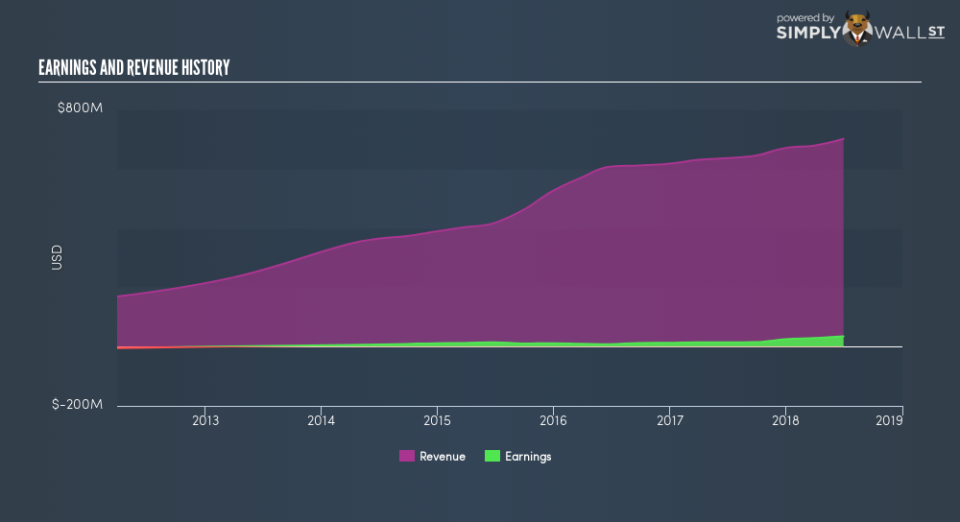How Has Boot Barn Holdings Inc’s (NYSE:BOOT) Earnings Fared Against The Long Term Trend

Today I will take a look at Boot Barn Holdings Inc’s (NYSE:BOOT) most recent earnings update (30 June 2018) and compare these latest figures against its performance over the past few years, as well as how the rest of the specialty retail industry performed. As an investor, I find it beneficial to assess BOOT’s trend over the short-to-medium term in order to gauge whether or not the company is able to meet its goals, and ultimately sustainably grow over time.
Check out our latest analysis for Boot Barn Holdings
Were BOOT’s earnings stronger than its past performances and the industry?
BOOT’s trailing twelve-month earnings (from 30 June 2018) of US$34.9m has more than doubled from US$14.2m in the prior year. Furthermore, this one-year growth rate has exceeded its 5-year annual growth average of 34.8%, indicating the rate at which BOOT is growing has accelerated. How has it been able to do this? Let’s see whether it is only because of industry tailwinds, or if Boot Barn Holdings has seen some company-specific growth.
In the past few years, Boot Barn Holdings expanded its bottom line faster than revenue by efficiently controlling its costs. This has led to a margin expansion and profitability over time. Looking at growth from a sector-level, the US specialty retail industry has been growing, albeit, at a unexciting single-digit rate of 8.1% in the past year, and 7.3% over the past five years. This growth is a median of profitable companies of 25 Specialty Retail companies in US including GameStop, DSW and Sports Direct International. This means any uplift the industry is enjoying, Boot Barn Holdings is capable of leveraging this to its advantage.
In terms of returns from investment, Boot Barn Holdings has fallen short of achieving a 20% return on equity (ROE), recording 15.4% instead. However, its return on assets (ROA) of 8.6% exceeds the US Specialty Retail industry of 7.2%, indicating Boot Barn Holdings has used its assets more efficiently. Though, its return on capital (ROC), which also accounts for Boot Barn Holdings’s debt level, has declined over the past 3 years from 9.7% to 8.5%.
What does this mean?
Boot Barn Holdings’s track record can be a valuable insight into its earnings performance, but it certainly doesn’t tell the whole story. Positive growth and profitability are what investors like to see in a company’s track record, but how do we properly assess sustainability? You should continue to research Boot Barn Holdings to get a better picture of the stock by looking at:
Future Outlook: What are well-informed industry analysts predicting for BOOT’s future growth? Take a look at our free research report of analyst consensus for BOOT’s outlook.
Financial Health: Are BOOT’s operations financially sustainable? Balance sheets can be hard to analyze, which is why we’ve done it for you. Check out our financial health checks here.
Other High-Performing Stocks: Are there other stocks that provide better prospects with proven track records? Explore our free list of these great stocks here.
NB: Figures in this article are calculated using data from the trailing twelve months from 30 June 2018. This may not be consistent with full year annual report figures.
To help readers see past the short term volatility of the financial market, we aim to bring you a long-term focused research analysis purely driven by fundamental data. Note that our analysis does not factor in the latest price-sensitive company announcements.
The author is an independent contributor and at the time of publication had no position in the stocks mentioned. For errors that warrant correction please contact the editor at editorial-team@simplywallst.com.

